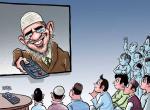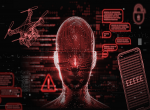Abstract
This paper aims to explain how and why London came to be a hub for Pan-Islamist jihadism during the 1990s. It posits that the origins of the ‘Londonistan’ phenomenon lie in a long British tradition of using intelligence to obtain strategic benefits. The present jihadist threat to the United Kingdom (UK) is partly the result of a failed attempt by Whitehall to influence world affairs. Londonistan was the fallout of a policy of tacitly sheltering radical groups in order to enhance the UK’s global clout and advance its overseas interests.
Although the UK government made efforts after 2001 to restrict the activities of Pan-Islamist groups, its intelligence services showed poor judgment. Owing to a lack of expertise on radical Islamism, they failed to assess the long-term threat posed by these groups. An uncooperative legal regime also restricted the scope of counter-terrorist activity. The result was the carnage of 7th July 2005, when suicide bombers attacked the London Underground. It was only after this tragedy that the UK dropped its earlier ambivalence towards foreign terrorist groups.
LONDONISTAN: ITS ORIGINS AND INTERPRETATIONS
The word ‘Londonistan’ was coined by the French counter-intelligence service in 1995.1It referred to the UK government’s policy of allowing radical Islamists from across the globe to set up political offices in London, thereby escaping pressure from counter-terrorist agencies in their home countries. The immediate provocation for the epithet was Britain’s refusal to extradite Algerian terrorist suspect Rachid Ramda, who had been granted asylum in the country since 1992.2 British officials purported to be concerned over Ramda’s human rights, and whether he would be granted a fair trial in France. For a full decade, they dragged their feet on the issue. After the 7 July 2005 (7/7) bombings in London however, these concerns vanished and Ramda was extradited within six months.
Through the latter half of the 1990s, ‘Londonistan’ became a popular buzzword in the international counter-terrorism fraternity. A number of countries found themselves frustrated in their efforts to combat terrorist groups (both religious and secular) that were based in the UK. India, Saudi Arabia, Egypt, Turkey, the United States, Sri Lanka and Peru, all found the UK government sympathetic but uncooperative when it came to counter-terrorism.3
While this was going on, the British public remained ignorant of its government’s policy. Counter-terrorist cooperation was a government-to-government issue, and did not concern it. With the July 2005 London bombings however, counter-terrorism became a public interest issue. As allegations of ‘intelligence failure’ were leveled, there was a search for political narratives which could rationalize how Britain had become a terrorist target. One school of thought emerged that blamed the government for being over-tolerant of radical Islamism. It argued that misplaced concern for civil rights had led to the creation of a terrorist state within Britain.4Another school of thought asserted that the government had been neither confused nor benign, but had deliberately sought to use Islamists as tools in a covert geo-political contest over energy resources. 7/7, according to this theory, was blowback for covert operations mounted by British intelligence in the Arab world and Central Asian republics.5
This paper seeks to synthesize these two, almost completely opposed views of British policy towards radical Islamism. It holds that governmental respect for civil liberties sustained the Londonistan phenomenon once it took hold. Yet, the reasons for the initial emergence of Londonistan were significantly different, and more calculating. They dealt with the UK intelligence services’ search for a post-Cold War role, and the potential that radical Islamism offered as a bargaining chip in diplomatic negotiations.
This paper is based on the premise that worldwide, counter-terrorist cooperation lends itself to manipulation by geo-political agendas. National security policies, if convincingly dressed up as counter-terrorist initiatives, can make substantial headway against what would otherwise be strong opposition from other states.6The paper argues that such opportunism pervaded the British intelligence community (primarily MI6) during the 1990s, and was responsible for the emergence of Londonistan. To support its argument, the paper fuses together various interpretations of Londonistan’s creation that have appeared in the UK since 2005.
INTELLIGENCE AS AN INSTRUMENT OF NATIONAL POWER
Central to Britain’s rise as a great power during the 19th century was the policy of divide-and-rule. As a demographically weak nation with a strong appreciation of the value of intelligence, Britain was quick to exploit opportunities for subversion abroad wherever these appeared. From 1808, the country had armed and trained Spanish guerrillas to fight a proxy war against Napoleon’s armies in the Iberian peninsula. The eventual defeat of Napoleon in 1814-1815 vindicated such a strategy. Thereafter, using others to fight its own wars, or playing both sides against the middle, was imbued with a halo of respectability hitherto unassociated with such tactics. Subversion and cooptation came to be considered, not as a cowardly form of warfare, but as legitimate means of empire-building.7As early as 1821, British writers were suggesting that it was through precisely such means that Indian subcontinent should be conquered and administered.8
However, after the disastrous Suez Crisis of 1956, Britain was unequivocally reclassified as a tier-two power. It would henceforth have to rely primarily on intelligence rather than military force to influence international affairs. Here the country’s cultural and political links with former colonies were a crucial asset for both; intelligence collection activities, and covert action. Whitehall opted to continue with a long-standing policy of building up links with militant factions in the colonies, and using them to shape geo-political dynamics. For example, it is widely believed in Egypt that British money helped create the Muslim Brotherhood in 1928, as a tool of para-political covert action.9The Brotherhood was perceived as a weapon which was being used against communist and nationalist politicians alike, with the aim of keeping Egypt’s pro-Western king on his throne. Also, in 1953 Britain’s external intelligence service MI6 jointly sponsored a coup in Iran alongside the CIA. The British used their extensive intelligence contacts in Iran to mobilize the country’s ultra-orthodox religious establishment as a proxy to generate street-power.10
Hosting political rebels from the Third World, both religious and secular ones, thus became a feature of British policy during the post-colonial era. Official justifications for this centred on the fact that Britain had long been a haven for those considered subversive in less tolerant countries.11Karl Marx and Vladimir Lenin had both plotted revolutions in their home countries while comfortably ensconced in London.12 Britain’s geographic isolation from the continent had traditionally meant that it could safely host dissidents without worrying about the threat of retaliatory invasion. Given the British Empire’s cultural influence over much of the world’s population, there seemed little reason why militants seeking refuge from prosecution should not gravitate towards what remained of it. Partly by sheltering such individuals, the UK intelligence and security services were able to build liaison relationships with their counterparts in approximately 120 countries.13
Even so, throughout the Cold War, the main instrument that the UK used to enhance its international profile was its proximity to the US. By playing up the significance of the ‘Special Relationship’ its intelligence services enjoyed with their American counterparts, London sought to assert its unique role in global affairs. British intelligence officials succeeded in developing a patronizing discourse, that blurred the basic inequality of the relationship and made it look more like a give-and-take arrangement. They never failed to remind American counterparts of the Empire’s glorious past, and frequently offered advice as to how the present-day United States could learn from it.14
The end of the Cold War fundamentally altered the dynamics of the ‘Special Relationship’. MI6 was caught unawares by the fall of the Berlin Wall and the collapse of the Soviet Union.15 There was a scramble in the early 1990s to find new topics of intelligence interest, and so preserve what had become extensive bureaucratic turf. During this transitional period, the British Foreign Secretary admitted that the country had long exerted an influence in international affairs that was disproportionately large, given its limited status. The primary means by which this influence was exercised was good intelligence, and good use of that intelligence during diplomatic negotiations.16
In this situation, counter-terrorism emerged as a new ‘hot topic’ that commanded the attention of countries in the global South, but was only of indirect interest to the UK. The fact that a number of political exiles from these countries were based in London meant that their governments had to keep in Whitehall’s good books, if they were to continue surveillance activities on British soil. Multilateral intelligence cooperation thus partially replaced the predominantly bilateral arrangement of the Cold War, as Britain’s claim to a special international status. This last point needs to be carefully understood, as it forms the crux of this paper’s argument. In the post Cold War era, Britain sought to increase the liaison value of its intelligence services by making them increasingly relevant to the counter-terrorist efforts of other countries. Towards this end, it allowed extremists of numerous hues, a large number of whom happened to be Islamists, to enter its shores and settle within. All that was asked of them was an assurance that they would not disturb the peace within the UK itself.
ISLAMISM IN THE UK DURING THE 1990s
This is not to say that the UK did not face a terrorist threat during the 1990s; it did. The threat was not international terrorism however, but domestic Irish terrorism deriving from the Northern Ireland issue. Reportedly, the internal security service (MI5) spent 44% of its annual budget on combating ‘Irish and other domestic’ terrorism during this period.17 It can be reliably assumed that since British officialdom at the time did not regard Islamist militancy as a domestic problem, coverage of this threat was not given priority. Yet, British officials were always the first in international forums to press for greater intelligence-sharing in counter-terrorism. It was a constant source of irritation to French and Israeli officials that for all their splendid rhetoric, the British would themselves often be slow to share any intelligence.18
It gradually became known in the counter-terrorism fraternity that the UK intelligence agencies had entered into a secret albeit informal ‘Covenant of Security’ with radical Islamists. The terms of the Covenant were straightforward: if the jihadists confined themselves to financing and plotting terrorist attacks overseas, Britain would not interfere in their activities.19On no account could blood be allowed to flow within the UK itself. The Covenant was scrupulously observed by both terrorists and Whitehall between 1997 and 2000.20 From 2001, the UK government began to take a more uncompromising stand against Islamist militancy, but was thwarted by its legal system and constitutional freedoms.21 Only at this point did the benevolence of the British political tradition and its guarantees of individual rights really start to become an obstacle to effective counter-terrorism. Until then, there was not only an institutional willingness to tolerate Islamist militancy in Britain, but almost a tacit understanding that it could be leveraged as a geo-political asset.
One need only look at the immigration system to appreciate the point. Britain specifically slanted its immigration laws to expedite an influx of political dissidents (including Islamists), as opposed to humanitarian refugees.22 Protests by Middle Eastern governments battling religious terrorism would usually be met by carefully-orchestrated sermons on the need to observe human rights. The reason why such a policy was followed is not hard to fathom. Britain had extensive commercial interests in the Middle East (particularly Saudi Arabia), and was keen to retain some leverage in diplomatic negotiations with local regimes.23 Adopting a hands-off policy towards terrorists based on its territory served a geo-political purpose.
Since the end of the Cold War, economic intelligence had become a predominant concern of Western governments, as former Cold War allies competed to bag lucrative contracts in the erstwhile Third World. In this situation, there were increasing cases of economic espionage against friendly states, and fewer national security imperatives for intelligence cooperation within NATO.24The UK-US ‘Special Relationship’ could not be counted upon during the 1990s to continue serving British interests, and a new means of leverage was needed. Radical Islamism was the solution: by permitting militants to move to the UK, British officialdom gained an important asset for use in bilateral negotiations.
There seemed little risk to it. On the surface, jihadists had no reason to turn on Britain, the country that had given them shelter. In the past too, rebellions had been planned by UK-based political exiles, with their effects being too distant in geographic terms to affect the British public. Moreover, engaging in divide-and-rule had long been a staple of British strategy, and the spectacular results it had yielded previously were still remembered. All the UK had to do in effect, was not interfere with the influx of foreign terrorists seeking shelter within its borders, and convey that they were free to carry on supporting violent activities overseas.
British Intelligence’s sole obsession from 1997 onwards was to verify whether foreign jihadists were keeping to their commitment under the Covenant of Security.25 At most, its officers would extend themselves to asking if Islamist ideologues had advocated attacking Americans on British territory. So frustrated did foreign intelligence organizations get with the UK’s inaction against terrorists that they contemplated mounting paramilitary covert actions in London. French Intelligence for example, explored the possibility of simply abducting Rachid Ramda from the country and smuggling him back to France.26 Allegedly, the Israeli Mossad even sent a 19-member assassination squad to Britain in 2003 in order to eliminate fifty troublesome Islamists.27
THE INTELLIGENCE FAILURE
British intelligence agencies had a poorer understanding of radical Islam than their foreign counterparts, who were battling it on a daily basis. French officials for example, knew far more about the extent to which Pan-Islamism could be redirected against countries that had hitherto escaped the terrorists’ wrath.28 While the British were extraordinarily well-informed about jihadist activities in Britain, owing to their long-standing appreciation of the value of intelligence, they did not know how to use this knowledge. Nor does it appear, did they really make attempts to learn.29 Until 2001, Londonistan was an arrangement that suited the British establishment as much as it did the terrorists.30 It was only thereafter that the latter began to systematically employ legal safeguards as a weapon against the state that had sheltered them.
The biggest share of the blame for Londonistan lies with MI6. As the UK’s external intelligence agency, it would have known better than its domestic counterpart the backgrounds of those who thronged to the country, seeking asylum. So inviting was London as a safe haven to Pan-Islamist jihadists that in 1995, even Osama Bin Laden considered applying for asylum. To be fair, the instant the British Home Office realized the depth of his involvement in international terrorism, it issued a banning order. Even so, one of Bin Laden’s henchmen continued operating a media office in London, from which he helped in planning the 1998 East Africa embassy bombings.31Moreover, in terms of narrow bureaucratic interests it was MI6 that stood to gain most from Pan-Islamism in the UK. As the agency’s mandate involved dealing with foreign governments in order to advance British interests, the jihadists gave it a trump card to use in securing foreign cooperation. Furthermore, the overwhelming emphasis in the mid-1990s on economic intelligence had undermined MI6’s grasp of security-related issues. Consequently, when the agency used radical Islamists in paramilitary covert operations overseas, as in Libya in 1996, it did not think through the consequences of such an alliance.32
By contrast, MI5 seems to have a stronger case in its own defence. In 1992, the agency was given the lead role in combating Irish Republican terrorism.33 Through the 1990s, as the IRA threat dwindled in since size the level of difficulty involved in monitoring it increased, necessitating the commitment of additional resources. Furthermore, there was also the problem of Loyalist terrorism in Northern Ireland; a major obstacle to any potential peace settlement.34In 1998, MI5’s domestic counter-terrorist effort was vindicated when the Good Friday Agreement was signed, creating grounds for amicable settlement of political differences. Given its largely reactive role in the national security establishment, much of the agency’s activity focused on tactical fire-fighting actions rather than long-term strategic assessment.35 Like any organization, MI5 had finite operational resources which were allocated across a wide range of current security threats that constantly needed to be ‘countered’. Counter-terrorism, counter-espionage (mostly in relation to economic espionage) and counter-narcotics thus dominated the agency’s workload through the 1990s.36 Defeating the Islamist threat was not, strictly speaking, a counter-terrorism mission since the jihadists had yet not resorted to violent activities within the UK. Rather, it was a counter-subversive mission, and it is here that MI5 really slipped up.
As part of a major internal shake-up, in 1992 the agency disbanded its counter-subversion unit. The unit (known as F-Branch) had been monitoring how communist and neo-Nazi ideologues operated within Britain, and used to assess the long-term implications of their activities. It thus possessed a sophisticated understanding of how subversive elements worked in British society, and the means by which they could be countered. With the end of the Cold War, a belief took hold that ideological subversion was no longer a threat. By disbanding F-Branch, MI5 robbed itself of the one entity that was ideally placed to appreciate the implications of allowing foreign Islamists into Britain.37 Bereft of an analytical paradigm against which it could study the growing jihadist movement, MI5 adopted a policy of ‘watchful tolerance’.38 It focused on penetrating the jihadist movement extensively, while otherwise not interfering with it in any way.
At various points during the 1990s, suspicions were voiced that MI5 was practically running the whole Londonistan phenomenon. All three of the most prominent jihadist ideologues in London – Abu Hamza, Abu Qatada and Omar Bakri-Mohammed – were suspected of being informers for British Intelligence. All three naturally denied the rumours, but American and French intelligence officials continued to remain suspicious of their British colleagues’ motives. The latter consistently denied that a non-aggression pact had been struck with the Islamists, and reiterated that they were committed to fighting terrorism.39 Obviously, when the existence of the Covenant of Security was unofficially admitted in the aftermath of the 7/7 bombings, Whitehall’s credibility plummeted.
The Covenant brought little or no tangible benefit to the UK. Islamist ideologues did not allow themselves to be co-opted to serve British interests in any way, no matter how much leeway was granted them in the encouragement of terrorism overseas.40 Britain between 1991 and 2001 played a dangerous game of attempting to manipulate terrorist groups without really understanding them. The jihadists in Britain were part of a larger international phenomenon that had affected numerous countries, including long-standing British allies. Before carrying out terrorist attacks, they proceeded to build up a subversive infrastructure in the UK, using the Covenant as a convenient cover. If anything, Londonistan was one case where the strategy of divide-and-rule was successfully applied against its originators. Abu Hamza for example, was run as an informer by both the Metropolitan Police Special Branch and MI5, with neither knowing of the other’s activities. By a show of co-operation, he succeeded in lulling both services into a sense of complacency that prolonged their period of passive monitoring.41
CONCLUSION
During the 19th century, Britain was admiringly viewed by its rivals on the Continent as the ‘great manipulator’ of international affairs. 42Being able to sow dissension among enemies in faraway lands by a combination of good political intelligence and deft negotiating strategies was a hallmark of the Empire. However, misplaced attachment to such methods carried through into the post-colonial and post-Cold War eras, as Britain sought to redefine its role in the New World Order. During the early 1990s, sections of the British intelligence community found the opportunity to use radical Islam as a geo-political pawn too tempting to pass up.
The ‘Londonistan’ phenomenon emerged out of a specific context. The UK was facing no clearly defined security threat. The collapse of the Soviet Union had removed fear of annihilation in a nuclear war, and terrorism seemed confined to a handful of deluded and marginalized Irishmen. By 1994, the British establishment felt confident enough to abolish G7, the counter-terrorist cell run jointly by MI5 and MI6 that was dedicated to tracking international jihadism.43For the intelligence services, the major issues that dominated their agenda were economic affairs and organized crime. Particularly on the economic intelligence front, competition with previously ‘friendly’ services was rife and showed no sign of abating. In this context, taking advantage of foreign governments’ need for information on terrorist groups (whether Islamist or secular), seemed not only sensible, but natural.
If there is one lesson that is to be drawn from the experience of ‘Londonistan’, it is that the age of striking Faustian deals with terrorists should end. Terrorism is a threat that needs to be fought by all its potential victims, with no separate peace treaties being made, either formally or informally. The UK is far from being the only country to have over-estimated its ability to manipulate terrorist groups to its own advantage.44 French Intelligence for its part, pursued its own version of the ‘Covenant of Security’ with Islamist terrorist groups for much of the Cold War. Under what became known as the Sanctuary Doctrine, France offered international terrorist organizations a safe haven on the understanding that they would avoid targeting French interests. French policymakers reasoned that foreign terrorists would have nothing to gain by alienating France, if they already had whatever freedom was necessary to continue supporting their activities elsewhere. The problem with this approach was that not only did it infuriate states who suffered from international terrorism, but it also conveyed the government’s timidity in confronting extremists. Thus, when foreign terrorists came into direct conflict with official French policy in the 1990s, they knew of the government’s keenness to avoid clashing with them. It was only natural then that they readily employed violent means to coerce Paris into altering its policies in a manner that would benefit them, instead of merely tolerating their presence.45
The tactic of aiding and abetting terrorist groups to advance geo-political agendas has generally tended to backfire on intelligence agencies. It is therefore necessary, in the interests of enhanced counter-terrorist co-operation, that liberal democracies should not allow narrow definitions of ‘national interest’ to cloud intelligence liaison. For this, the pursuit of economic and geo-political advantage vis-à-vis one another must be temporarily shelved, and efforts focused on defeating the common jihadist threat. British Prime Minister David Cameron has recently taken a positive step in this direction, by publicly denouncing Pakistani state support of terrorism. His policy stance contrasts sharply with the liberal-minded hubris of the previous UK Labour party government, which sought to rationalize cross-border terrorism almost to the point of justifying it. The incredible crassness of former British foreign secretary David Miliband, who in 2009 opportunistically linked the 26/11 attacks to Kashmir, cannot be easily forgotten or forgiven. In the interests of good long-term Indo-British relations, it is desirable that such ambiguity disappear from counter-terrorist narratives permanently. Only then shall terrorists and those who use them for hidden agendas realize that they cannot win.
Endnotes
Endnotes
1 : Rashmee Roshan Lal, “Moussaoui's mother: UK is the culprit”, Times of India, 5 May 2006.
2 : Christopher Caldwell, “After Londonistan”, The New York Times Magazine, 25 June 2006, www.nytimes.com, accessed on 5 August 2008.
3 : Sean O’Neill and Daniel McGrory, The Suicide Factory: Abu Hamza and the Finsbury Park Mosque (London: Harper Perennial, 2006), p. 109.
4 : For examples of this view, see Melanie Phillips, Londonistan: How Britain is Creating a Terror State Within (London: Gibson Square, 2006), pp. 25-26 and Michael Gove, Celsius 7/7 (London: Weindenfeld and Nicolson, 2006), p. 91.
5 : For a lengthy exposition of this argument, see Nafeez Mosaddeq Ahmed, The London Bombings: An Independent Enquiry (London: Duckworth, 2006), pp. 175-219.
6 : Monte Palmer and Princess Palmer, At the Heart of Terror (Lanham, Maryland: Rowman and Littlefield, 2004), pp. 260-266.
7 : John Keegan, Intelligence in War: Knowledge of the Enemy from Napoleon to Al-Qaeda (London:Pimlico, 2004), pp. 389-398.
8 : Satya Pal Dang, Terrorism in Punjab (New Delhi: Gyan, 2000), p. 22.
9 : Robert Dreyfuss, Devil’s Game: How the United States Helped Unleash Fundamentalist Islam (London: Owl Books, 2005), p. 47.
10 :Ibid., pp. 106-117.
11 : Christopher Caldwell, “After Londonistan”, The New York Times Magazine, 25 June 2006, www.nytimes.com, accessed on 5 August 2008.
12 : O’Neill and McGrory, The Suicide Factory, p. 293.
13 : Michael Herman, Intelligence Power in Peace and War (Cambridge: Cambridge University Press, 1996), p. 208.
14 : Ibid., pp. 214-215.
15 : Dorril, MI6, p. 757.
16 : Herman, Intelligence Power, p. 153.
17 : Christopher C. Harmon, “Five Strategies of Terrorism”, Small Wars and Insurgencies, Volume 12, Number, Autumn 2001, p. 54.
18 : O’Neill and McGrory, The Suicide Factory, p. 109 and Claire Hoy and Victor Ostrovsky, By Way of Deception: A Devastating Insider’s Expose of the MOSSAD (London: Arrow, 1991), p. 121.
19 : Crispin Black, 7-7: The London Bombs – What Went Wrong? (London: Gibson Square, 2005), p. 31.
20 :Christopher Caldwell, “After Londonistan”, The New York Times Magazine, 25 June 2006, www.nytimes.com, accessed on 5 August 2008.
21 : Lorenzo Vidino, Al Qaeda in Europe: The New Battleground of International Jihad (New Delhi: Viva, 2006), p. 156 and pp. 114-117.
22 : Stephen Ulph, “Londonistan”, http://www.jamestown.org/terrorism/news/article.php?search=1&articleid=23565, accessed on 3 August 2008.
23 : Phillips, Londonistan, pp. 93-95.
24 : Paul Todd and Jonathan Bloch, Global Intelligence: The World’s Secret Services Today (New Delhi: Books for Change, 2003), pp. 54-55.
25 : Omar Nasiri, Inside the Global Jihad (London: Hurst and Company, 2006), p. 280-281.
26 : Ibid., p. 297.
27 : Neil Doyle, Terror Base UK: Inside a Secret War (London: Mainstream, 2006), p. 74.
28 : Nasiri, Inside the Global Jihad, p. 286.
29 : John Kampfner, “Why the French call us Londonistan”, The New Statesman, 9 December 2002, http://www.newstatesman.com/200212090009.htm, accessed on 3 August 2008.
30 : Martin Bright and Paul Harris, “Londonistan no longer rings true”, The Guardian, 17 July 2005.
31 : O’Neill and McGrory, The Suicide Factory, pp. 110-111.
32 : Todd and Bloch, Global Intelligence, p. 111 and p. 117.
33 : Peter Gill and Mark Phythian, Intelligence in an Insecure World (Cambridge: Polity, 2006), p. 45.
34 : O’Neill and McGrory, The Suicide Factory, p. 110.
35 : Peter Hennessy, ‘From Secret State to Protective State’, in Peter Hennessy ed., The New Protective State (London: Continuum, 2007), p. 37.
36 : Phillips, Londonistan, pp. 87-88.
37 : Ibid., and Todd and Bloch, Global Intelligence, p. 115.
38 : John Kampfner, “Why the French call us Londonistan”, The New Statesman, 9 December 2002, http://www.newstatesman.com/200212090009.htm, accessed on 3 August 2008.
39 : Ibid.
40 : Gove, Celsius 7/7, pp. 89-91
41 : O’Neill and McGrory, The Suicide Factory, p. 143
42 : Speech by Professor Nicholas O’Shaugnessy at the RUSI Conference on ‘Hearts and Minds: British Counter Insurgency from Malaya to Iraq’ at RUSI, Whitehall, on 21 September 2007.
43 : Phillips, Londonistan, pp. 87-88.
44 : Regrettably, there are still likely to be differences in commitment levels to combating terrorism. These may exist due to different legal regimes, or simply due to lack of a commonly perceived threat. All that can be realistically hoped for is that deliberate encouragement is not given to terrorist groups to base themselves in one’s own territory and thereafter plan attacks against friendly powers. See Rohan Gunaratna, ‘Transnational Terrorism: Support Networks and Trends’, Faultlines: Writings on Conflict and Resolution, Volume 7, pp. 4-7.
45 : Jeremy Shapiro and Benedicte Suzan, ‘The French Experience of Counter-terrorism’, Survival, Volume 45, Number 1, Spring 2003, pp. 69-71.










Post new comment